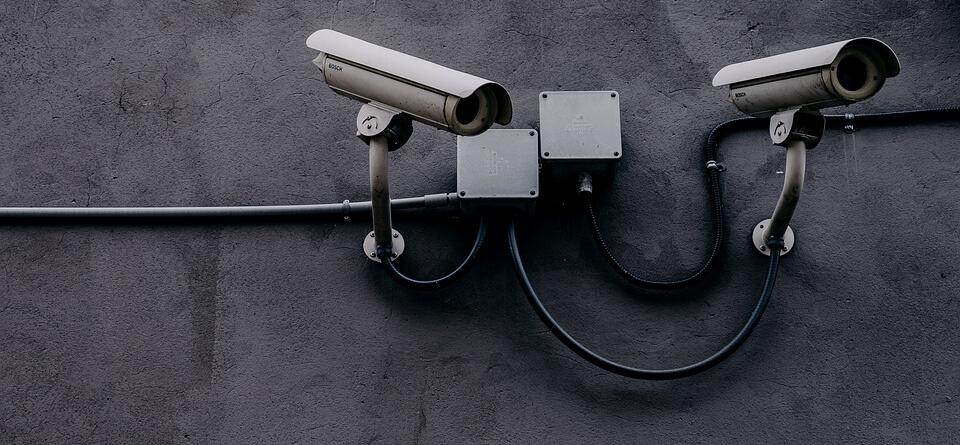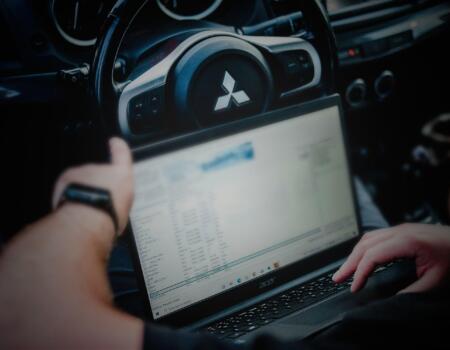The Evolution of CCTV Technology: A Brief History
The Evolution of CCTV Technology: A Brief History
Closed Circuit Television (CCTV) systems have become an ubiquitous part of modern life, offering surveillance and security in settings as diverse as airports, homes, and urban streets. This journey from early mechanical systems to today’s intelligent networked devices offers a fascinating insight into the evolution of technology, security concerns, and privacy debates. As we explore the milestones in the development of CCTV, it becomes clear how advancements have transformed the way we monitor and manage security in real-time.
Early Beginnings and the Age of Analog
The concept of CCTV was born in the late 1930s and early 1940s, with its first major public demonstration during the 1939 New York World’s Fair. Initially, these systems were rudimentary, involving simple cameras connected to monitors by cables, without the ability to record the footage. This era laid the foundational principles of CCTV operation, despite the limitations in technology.
The 1960s to 1980s marked a significant period of expansion for CCTV, particularly with the introduction of Video Cassette Recording (VCR) technology. This development allowed for the recording of video footage, a monumental leap forward that empowered businesses and government entities to enhance security measures. Surveillance cameras were no longer limited to real-time monitoring; they could now capture and store footage for later review, significantly expanding their utility. Analog systems dominated during this period, characterized by their reliance on coaxial cable connections and magnetic tape storage.
The Digital Transformation
The transition to digital technology in the late 1990s and early 2000s represented a pivotal evolution in CCTV systems. Digitalization offered several profound advantages over analog, including improved image quality, the ability to compress and store large amounts of footage more efficiently, and the ease of searching and retrieving video recordings. This era also introduced Digital Video Recorders (DVRs), which replaced the bulky and less reliable VCRs, marking another stride towards more sophisticated surveillance systems.
IP Cameras and the Networked Age
With the advent of Internet Protocol (IP) cameras in the early 21st century, CCTV technology took another leap forward. Unlike their analog predecessors, IP cameras could send and receive data via the internet or a computer network, offering greater flexibility in installation and vastly improved scalability. This period also saw the introduction of high-definition (HD) video, providing much clearer images and enabling more detailed analysis of surveillance footage. The networked nature of IP cameras laid the groundwork for the next significant phase in CCTV evolution—integration with other systems and the proliferation of smart CCTV technologies.
Integration and Intelligent Systems
Today’s CCTV systems are characterized by their high level of integration with other security and IT systems, as well as their use of artificial intelligence (AI) and machine learning technologies. Modern cameras are not just passive recording devices; they are equipped with advanced features like motion detection, facial recognition, and behavior analysis. These intelligent systems can provide real-time alerts, automate responses to specific events, and offer analytics that transform raw video data into actionable insights. Such capabilities are proving invaluable across a wide range of applications, from urban planning and traffic management to retail analytics and beyond.
Looking to the Future: The Next Frontier in CCTV Technology
As we look to the future, the evolution of CCTV technology appears boundless. The integration of AI and machine learning is set to deepen, making smart CCTV systems even more sophisticated. Developments in edge computing will enhance the ability of cameras to process data on-site, reducing the need for bandwidth and enabling faster decision-making. The potential for augmented reality (AR) to overlay digital information on live video feeds opens up new possibilities for security training, emergency response, and maintenance operations. Moreover, ongoing concerns around privacy and data protection are driving innovations in encryption and blockchain technology, aiming to secure the vast amounts of data captured by CCTV systems while respecting individual rights.
In conclusion, the journey of CCTV technology from its rudimentary beginnings to the intelligent, networked systems of today is a testament to the incredible pace of technological advancement. As this evolution continues, the future of surveillance promises even greater capability and sophistication, along with the ongoing challenge of balancing security needs with ethical considerations. As we navigate this complex landscape, the lessons learned from the history of CCTV will no doubt play a crucial role in shaping its future.
Closed Circuit Television (CCTV) systems have become an ubiquitous part of modern life, offering surveillance and security in settings as diverse as airports, homes, and urban streets. This journey from early mechanical systems to today’s intelligent networked devices offers a fascinating insight into the evolution of technology, security concerns, and privacy debates. As we explore the milestones in the development of CCTV, it becomes clear how advancements have transformed the way we monitor and manage security in real-time.
Early Beginnings and the Age of Analog
The concept of CCTV was born in the late 1930s and early 1940s, with its first major public demonstration during the 1939 New York World’s Fair. Initially, these systems were rudimentary, involving simple cameras connected to monitors by cables, without the ability to record the footage. This era laid the foundational principles of CCTV operation, despite the limitations in technology.
The 1960s to 1980s marked a significant period of expansion for CCTV, particularly with the introduction of Video Cassette Recording (VCR) technology. This development allowed for the recording of video footage, a monumental leap forward that empowered businesses and government entities to enhance security measures. Surveillance cameras were no longer limited to real-time monitoring; they could now capture and store footage for later review, significantly expanding their utility. Analog systems dominated during this period, characterized by their reliance on coaxial cable connections and magnetic tape storage.
The Digital Transformation
The transition to digital technology in the late 1990s and early 2000s represented a pivotal evolution in CCTV systems. Digitalization offered several profound advantages over analog, including improved image quality, the ability to compress and store large amounts of footage more efficiently, and the ease of searching and retrieving video recordings. This era also introduced Digital Video Recorders (DVRs), which replaced the bulky and less reliable VCRs, marking another stride towards more sophisticated surveillance systems.
IP Cameras and the Networked Age
With the advent of Internet Protocol (IP) cameras in the early 21st century, CCTV technology took another leap forward. Unlike their analog predecessors, IP cameras could send and receive data via the internet or a computer network, offering greater flexibility in installation and vastly improved scalability. This period also saw the introduction of high-definition (HD) video, providing much clearer images and enabling more detailed analysis of surveillance footage. The networked nature of IP cameras laid the groundwork for the next significant phase in CCTV evolution—integration with other systems and the proliferation of smart CCTV technologies.
Integration and Intelligent Systems
Today’s CCTV systems are characterized by their high level of integration with other security and IT systems, as well as their use of artificial intelligence (AI) and machine learning technologies. Modern cameras are not just passive recording devices; they are equipped with advanced features like motion detection, facial recognition, and behavior analysis. These intelligent systems can provide real-time alerts, automate responses to specific events, and offer analytics that transform raw video data into actionable insights. Such capabilities are proving invaluable across a wide range of applications, from urban planning and traffic management to retail analytics and beyond.
Looking to the Future: The Next Frontier in CCTV Technology
As we look to the future, the evolution of CCTV technology appears boundless. The integration of AI and machine learning is set to deepen, making smart CCTV systems even more sophisticated. Developments in edge computing will enhance the ability of cameras to process data on-site, reducing the need for bandwidth and enabling faster decision-making. The potential for augmented reality (AR) to overlay digital information on live video feeds opens up new possibilities for security training, emergency response, and maintenance operations. Moreover, ongoing concerns around privacy and data protection are driving innovations in encryption and blockchain technology, aiming to secure the vast amounts of data captured by CCTV systems while respecting individual rights.
In conclusion, the journey of CCTV technology from its rudimentary beginnings to the intelligent, networked systems of today is a testament to the incredible pace of technological advancement. As this evolution continues, the future of surveillance promises even greater capability and sophistication, along with the ongoing challenge of balancing security needs with ethical considerations. As we navigate this complex landscape, the lessons learned from the history of CCTV will no doubt play a crucial role in shaping its future.
Discover more from Akiatech Solutions Blog
Subscribe to get the latest posts sent to your email.









